Environmental Measures
Targets
In accordance with Sustainability Policy, MIRAI has set the following sustainability targets in order to appropriately identify and manage the environmental impact of real estate management and to conduct management that contributes to environmental conservation.
Main Targets
■Reduce GHG emission intensity of our portfolio by 5% over the next 5 years
■Reduce energy consumption intensity of our portfolio by 5% over the next 5 years
- The target period is from April 2021 to March 2022 as the first year, and from April 2025 to March 2026 as the year to achieve the target.
In addition, from April 2018 to March 2019 is the base year.
Performance Data
| Item | Unit | 2018/4~2019/3 (Base year) |
2023/4~2024/3 | 2024/4~2025/3 | |
|---|---|---|---|---|---|
| GHG | Consumption | t-CO2 | 24,815 | 35,921 | 35,088 |
| Scope 1 | t-CO2 | ー | 546 | 354 | |
| Scope 2 | t-CO2 | ー | 11,738 | 11,495 | |
| Scope 3 | t-CO2 | ー | 23,637 | 23,238 | |
| Intensity | t-CO2/㎡ | 0.11 | 0.06 | 0.06 | |
| Data coverage | % | ー | 100 | 100 | |
| Rate of change (Ratio of base year) | % | ー | 58 | 56 | |
| Energy | Consumption | MWh | 68,729 | 89,538 | 89,580 |
| Fuel Use | MWh | ー | 16,768 | 17,015 | |
| Other heat Consumption | MWh | ー | 6,717 | 6,584 | |
| Electricity Use | MWh | ー | 66,052 | 65,981 | |
| Intensity | MWh | 0.22 | 0.16 | 0.16 | |
| Data coverage | % | ー | 100 | 100 | |
| Rate of change (Ratio of base year) | % | ー | 72 | 72 | |
| Water | Consumption | ㎥ | 176,789 | 557,377 | 612,763 |
| Intensity | ㎥/㎡ | 1.24 | 1.02 | 1.11 | |
| Data coverage | % | ー | 100 | 100 | |
| Waste | Consumption | t | ー | 3,366 | 3,307 |
| Recycling rate | % | ー | 31 | 33 | |
| Data coverage | % | ー | 96 | 96 | |
- Actual figures are rounded down to the first decimal place, and percentages are rounded to the first decimal place.
- The performance data covers properties held as of the end of March each year. Properties that were sold or acquired during the period and for which data is difficult to obtain are excluded from the calculations.
- The emission factors used in the calculations are based on the "List of Calculation Methods and Emission Factors under the Calculation, Reporting and Publication System" (https://ghg-santeikohyo.env.go.jp/calc) published by the Ministry of the Environment.
- Intensity=Total consumption / (gross floor * Occupancy rate(annual average))
- “Energy” excludes consumption of renewable energy.
- Some data for the period ended March 31, 2022 to 2025 have received a limited assurance by a third-party organization.
- As a result of a close examination of environment data, some of the previously published data has been revised.
- GHG and Energy data of residence is aggregated from only the common areas of each property.
Environmental survey at the time of property acquisition
Environmental surveys are conducted as a due diligence item at the time of property acquisition, confirming the presence or absence of hazardous substances such as asbestos and PCB, and soil contamination based on expert reports.
Green lease contract
MIRAI has entered into green lease contracts with some of its tenants that provide for environmental considerations.
Acquisition of environmental certification
MIRAI promotes the acquisition of environmental certification for its properties. Please refer to here to see the status of certifications for each property.
Installation of environment-responsive facilities
MIRAI has installed LED lighting and other equipment to reduce environmental impact in some of its properties. MIRAI is also promoting environment-responsive construction using public subsidies and other funds.
Examples of environment-responsive facilities
LED lighting
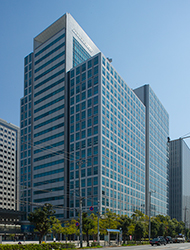
Shinagawa Seaside Park Tower
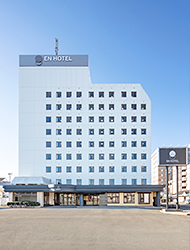
EN HOTEL Ise
Efficient air conditioning equipment
(reducing CO2, etc.)
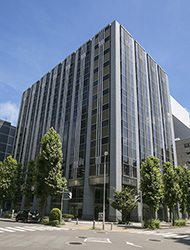
MI Terrace Nagoya-fushimi

Hotel Sunroute Niigata
Gray water and rainwater harvesting facilities
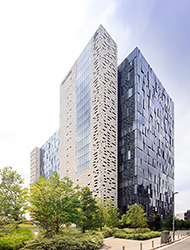
Shinjuku Eastside Square
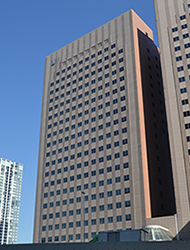
Tokyo Front Terrace
Examples of use the subsidy programs
Subsidies for capital investment projects that contribute to reducing electricity demand
Hotel Sunroute Niigata
EN HOTEL Ise
Subsidies for projects to control carbon dioxide emissions
Shinagawa Seaside Park Tower
Kawasaki Tech Center
Hotel Sunroute Niigata
Subsidies to promote energy-saving investments
Shibuya World East building
